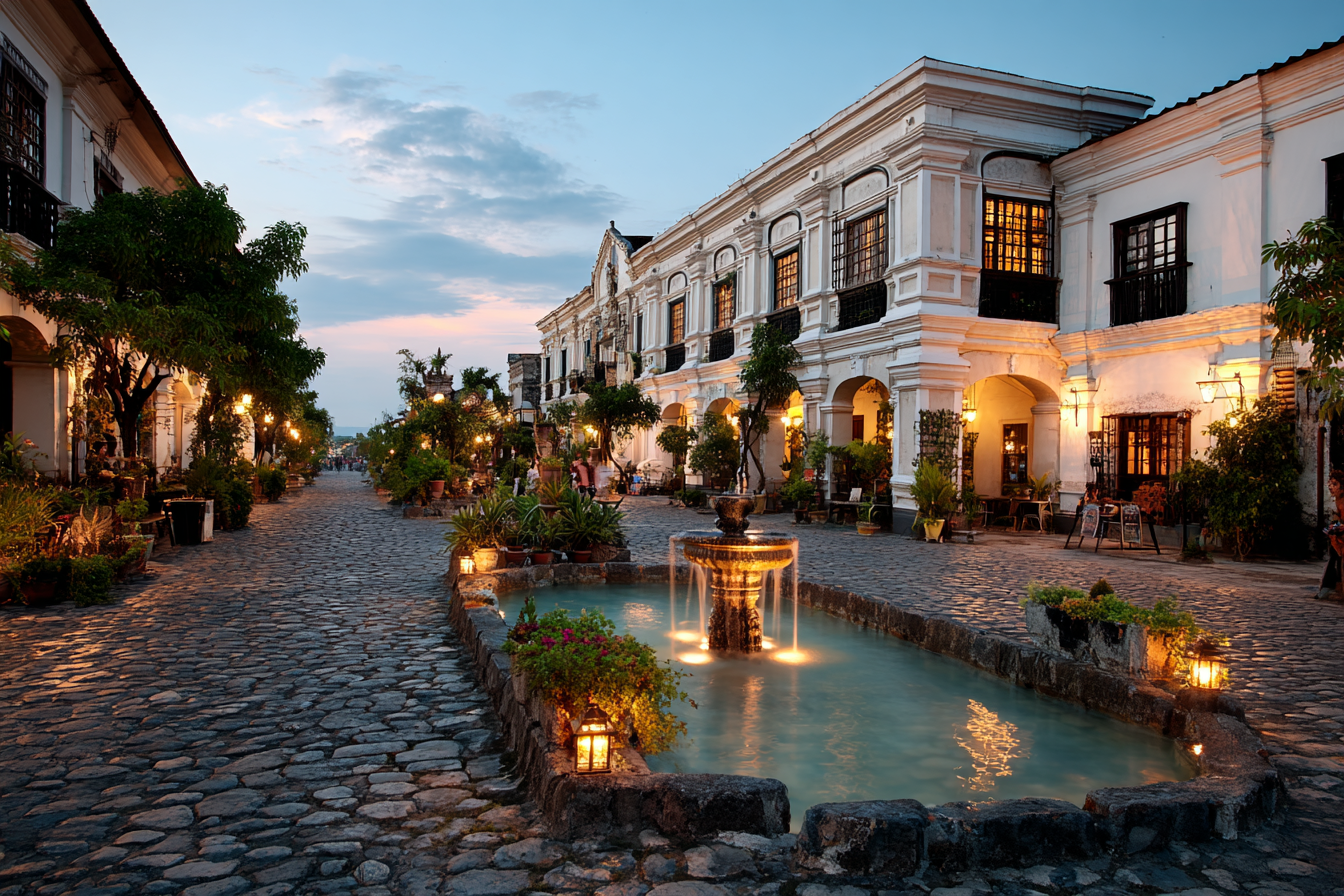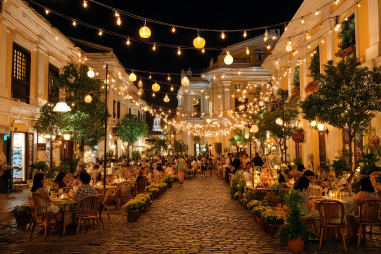Step into the enchanting city of Vigan, a place where every stone and street tells a tale from centuries past. Renowned for its well-preserved Spanish colonial streets and rich cultural tapestry, Vigan stands as a living museum of Philippine history. The city’s historical landmarks are not mere structures; they are storytellers that offer a glimpse into the nation’s colonial struggles, religious heritage, and architectural brilliance. Let’s take a journey through these iconic sites and uncover the stories etched behind the stones.
Vigan’s Historical Significance: A Living Time Capsule
Located in the province of Ilocos Sur, Vigan is one of the few Philippine cities where its Spanish colonial urban layout remains intact. Declared a UNESCO World Heritage Site in 1999, the city is revered for its unique blend of Asian and European architectural styles. Vigan’s historical significance stems from its role as a bustling trading post during the Spanish colonial era. It was a strategic hub connecting the East and West, which helped shape its cultural and economic development. Visiting Vigan means immersing yourself in a city where history is preserved through beautiful stone-paved streets, age-old houses, and majestic churches that have stood the test of time.
Plaza Salcedo: The Heartbeat of Vigan
At the core of Vigan’s old town lies Plaza Salcedo, a charming public square named after Juan de Salcedo, the Spanish conquistador credited with founding the city. This plaza serves as the social and cultural heartbeat of Vigan, where locals and tourists alike gather to soak in the ambiance and witness the city’s vibrant life.
The plaza is notably marked by a beautiful dancing fountain that comes alive at night with a mesmerizing display of lights and water movements synchronized to music. Surrounding the plaza, colonial-era structures such as the Provincial Capitol and municipal buildings showcase the enduring architectural style of the period. The plaza itself has seen countless historical events and remains a symbol of Vigan’s resilience and community spirit.
St. Paul’s Cathedral: A Testament of Faith and Architecture
Among Vigan’s most iconic landmarks is St. Paul’s Cathedral, also known as Vigan Cathedral. This Romanesque-style church is a magnificent example of Spanish colonial church architecture and serves as the seat of the Roman Catholic Diocese of Ilocos Sur. Built in the early 1700s, the cathedral’s façade, adorned with intricate stone carvings and an imposing bell tower, illustrates the meticulous craftsmanship of early Filipinos and Spanish artisans.
Inside, visitors can admire stained glass windows and religious statues that have been preserved for centuries. The cathedral played a significant role in the spiritual lives of the community and was a sanctuary during various historical upheavals, including the Philippine Revolution. Today, it remains a place of worship and a beacon of Vigan’s religious heritage.
Syquia Mansion and Other Historical Residences: Windows to the Past
Vigan’s charm is not limited to its public squares and churches—its residential structures also contribute richly to the city’s historical narrative. One of the most notable among these is the Syquia Mansion, the ancestral home of Elpidio Quirino, the sixth president of the Philippines. This grand house offers a glimpse into the lifestyle of Filipino elites during the Spanish and American colonial periods. Visitors can explore rooms filled with antiques, period furniture, and memorabilia revealing both family and national history.
Besides the Syquia Mansion, other ancestral homes like the Crisologo Museum and Mitra House exhibit traditional Filipino-Spanish architecture known locally as “Bahay na Bato.” These homes feature thick stone walls, capiz shell windows, and wide wooden balconies. Each residence has its own stories of prominent families, upkeep through generations, and their roles during pivotal moments in local history.
Bantay Bell Tower: A Historical Watchtower
Just a short distance from the city center stands the Bantay Bell Tower, a historical landmark that served both religious and military functions. Built in the early 1600s, this bell tower provided early warning signals against approaching enemies and invaders. Its strategic location overlooking the surrounding plains made it an integral part of Vigan’s defense system.
The Bantay Bell Tower is also an architectural gem, constructed from coral stones and bricks with baroque design elements. Climbing to the tower’s top gives visitors panoramic views of Vigan’s historic landscape, enhancing appreciation for how the city’s geography played a role in its history. The bell itself is famed for its size and the clarity of its chimes, which once echoed across the town, rallying the community in times of peace and conflict.
Preservation Efforts and Cultural Impact
Preserving Vigan’s historical landmarks has been a community and government priority for decades. Efforts include restoration projects, strict conservation laws, and the promotion of cultural events to keep traditions alive. The local government, in partnership with national cultural agencies, ensures that renovations are done carefully to maintain authenticity while allowing modern use.
These preservation efforts have had a significant cultural impact by fostering pride among residents and attracting scholars and tourists who are eager to study and experience Philippine heritage. Annual festivals such as the Vigan Longganisa Festival highlight local cuisine and crafts, intertwining historical appreciation with contemporary life.
Experience History Through Guided Tours
Exploring Vigan’s historical landmarks is even more enriching with guided tours that emphasize storytelling and historical context. Knowledgeable local guides lead visitors through cobblestone streets, sharing fascinating anecdotes about historical figures, architectural styles, and cultural traditions. These tours often include visits to lesser-known sites and interactive experiences like traditional crafts demonstrations and local culinary tastings.
Tour options range from walking tours in the historic city center to tricycle rides around nearby heritage villages. For those who prefer an immersive experience, some eco-friendly tours combine history with nature walks, giving a fuller picture of the region’s environment and heritage.
Connecting with Vigan’s Past: More Than Just a Visit
Exploring the historical landmarks of Vigan is more than sightseeing; it is an opportunity to connect deeply with the city’s soul. Each building, plaza, and tower is a chapter in the story of the Filipino people—recounting their struggles, faith, and enduring spirit. By walking these streets and learning the stories behind the stones, visitors gain insight into how history shapes identity and culture.
Vigan invites you not just to observe but to experience its past, keeping traditions alive while embracing the present. It’s a destination where history comes alive, giving everyone a chance to walk through time and carry home lasting memories of a truly remarkable place.







